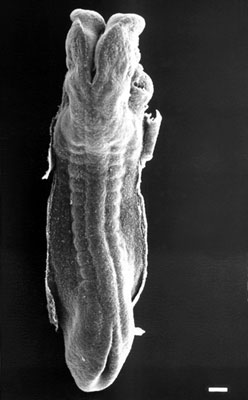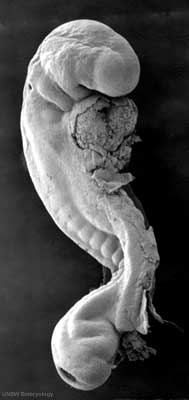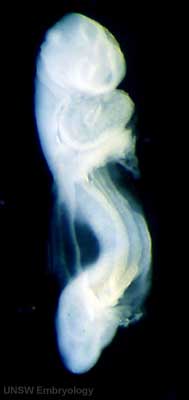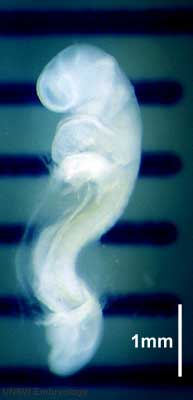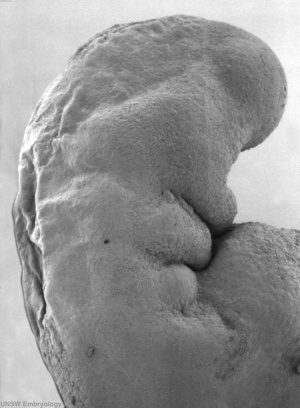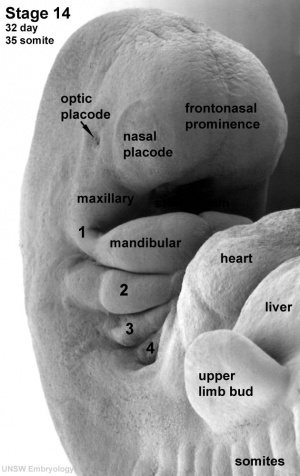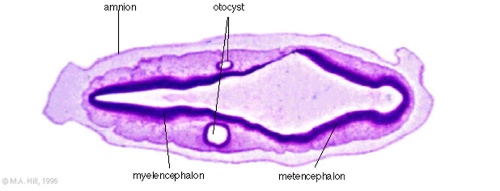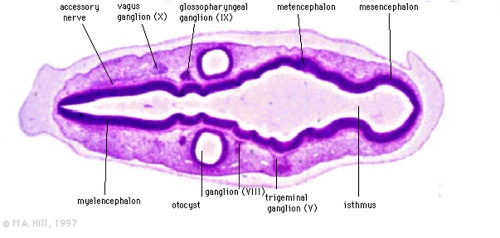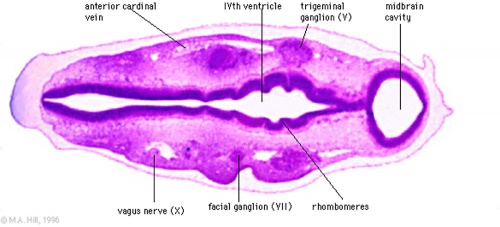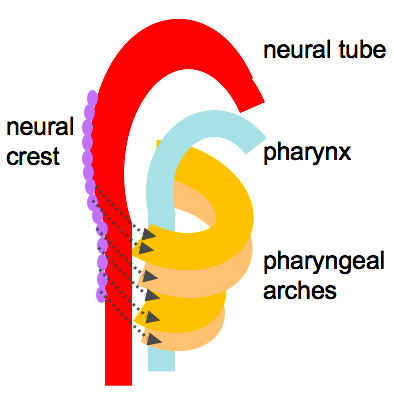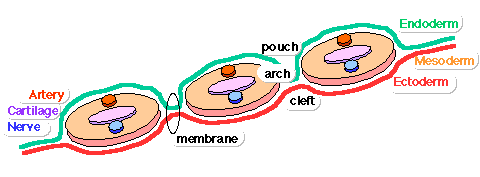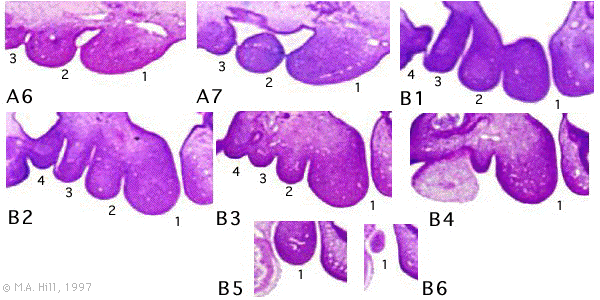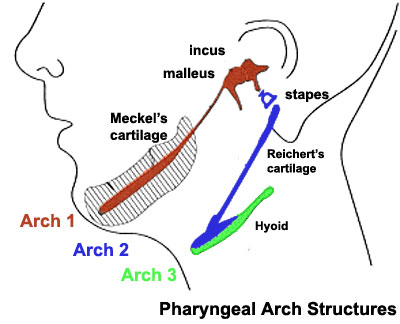2011 Lab 6 - Early Embryo
| 2011 Lab 6: Introduction | Trilaminar Embryo | Early Embryo | Late Embryo | Fetal | Postnatal | Abnormalities | Online Assessment |
Week 4
During week 4 a number of features appear visible on the embryo surface:
- At the level of the body heart, liver, somite bulges and limb buds appear.
- At the level of the head sensory placodes and pharyngeal arches appear.
Carnegie Stage 12 to 14
Week 4
This is a scanning EM of the embryo superior dorsal view showing the paired otic placodes sinking into the surface at the level of the hindbrain between day 24 and day 25
Week 5
Sensory Placodes
Stage 13
Identify the structure and position of the otic vesicle (otocyst) relative to other head structures.
Pharyngeal Arches
Stage 13 Pharyngeal Arches
A6L A7L B1L B2L B3L B4L B5L B6L
Look through the above cross-sections of the stage 13 embryo observing and identifying structures of the face and ear visible at this stage.
Structures derived from Arches
|
Arch |
Nerve |
Muscles |
Skeletal |
Artery |
|
(maxillary/mandibular) |
|
mastication |
Meckel's cartilage |
maxillary(terminal branches) |
|
(hyoid) |
|
facial expression |
Reichert's cartilage |
stapedial (embryonic) |
|
|
|
stylopharyngeus |
greater cornu of hyoid, lower part of body of hyoid bone |
common carotid, internal carotid (root) |
|
|
|
intrinsic muscles of larynx, pharynx; levator palati |
thyroid, cricoid, arytenoid, corniculate and cuneform cartilages |
4 - aortic arch, right subclavian |
Structures derived from Pouches
|
Pouch |
Overall Structure |
Specific Structures |
|
|
tubotympanic recess |
tympanic membrane, tympanic cavity, mastoid antrum, auditory tube |
|
|
intratonsillar cleft |
crypts of palatine tonsil, lymphatic nodules of palatine tonsil |
|
|
inferior parathyroid gland, thymus gland |
|
|
|
superior parathyroid gland, ultimobranchial body |
|
|
|
becomes part of 4th pouch |
Additional Information
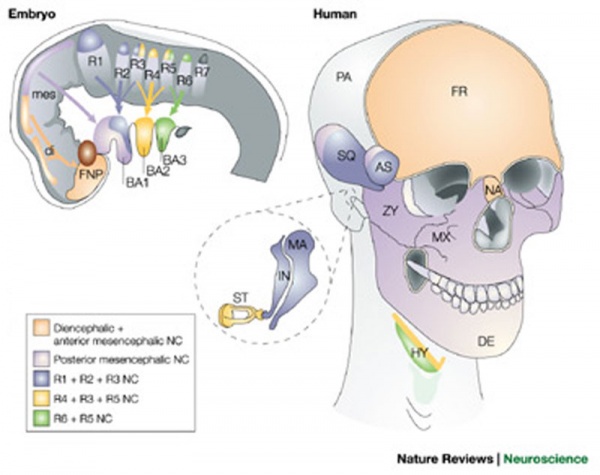
|
Cranial neural crest contribution to skeletal structures [1]
The embryo figure[1] shows colonization of the head and pharyngeal arches by diencephalic, anterior and posterior mesencephalic, and rhombencephalic neural crest cells (NCCs), as indicated by the colour code. The diagram is representative human embryos, although the NCC migratory pathways might differ slightly in different species. The skull drawings show contributions of NCC populations to cranial skeletal elements of humans, based on NCC fate-mapping studies and on extrapolation of avian and mouse data to known homologues in the human. Some bones, including the squamosal (SQ), alisphenoid (AS), and pterygoid (PT), are shown with mixed contribution from different NCC populations. Note that in mammals the frontal (FR) and parietal (PA) bones have been reported to be of neural crest and mesodermal origin, respectively. (text modified from original figure legend) |
|
|
Reference
- ↑ 1.0 1.1 <pubmed>14523380</pubmed>| Nat Rev Neurosci.
| 2011 Lab 6: Introduction | Trilaminar Embryo | Early Embryo | Late Embryo | Fetal | Postnatal | Abnormalities | Online Assessment |
Glossary Links
- Glossary: A | B | C | D | E | F | G | H | I | J | K | L | M | N | O | P | Q | R | S | T | U | V | W | X | Y | Z | Numbers | Symbols | Term Link
Cite this page: Hill, M.A. (2024, April 26) Embryology 2011 Lab 6 - Early Embryo. Retrieved from https://embryology.med.unsw.edu.au/embryology/index.php/2011_Lab_6_-_Early_Embryo
- © Dr Mark Hill 2024, UNSW Embryology ISBN: 978 0 7334 2609 4 - UNSW CRICOS Provider Code No. 00098G
